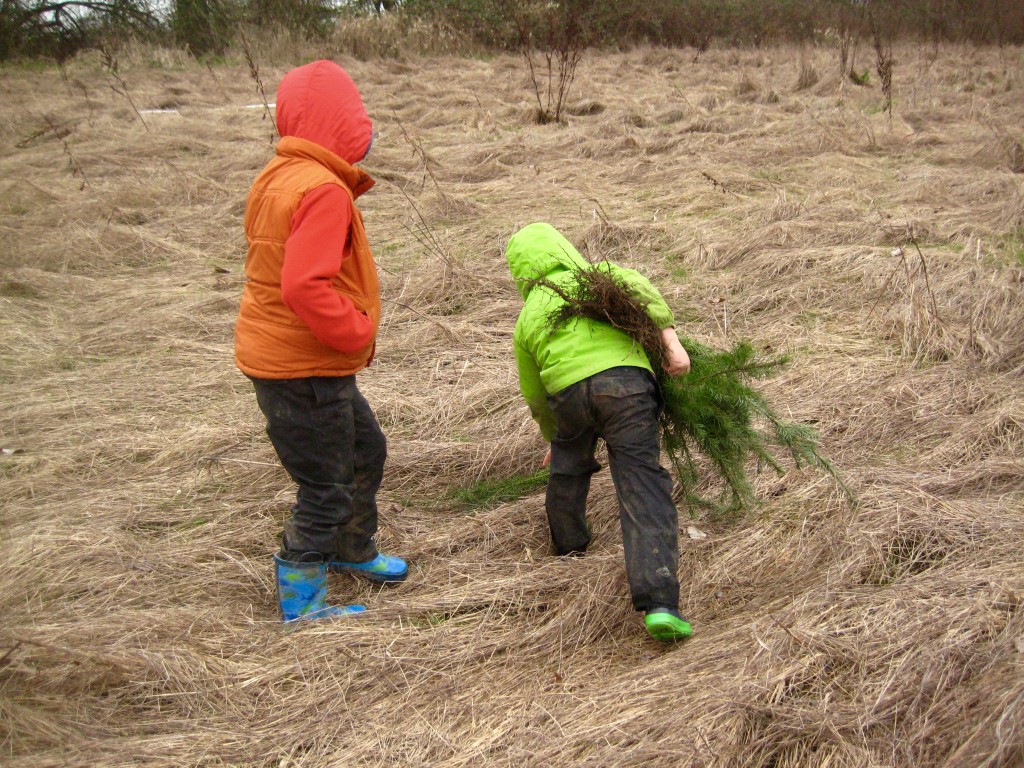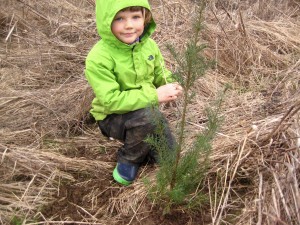Hello, friends. In this week’s newsletter, I want to share with you two quotes that I know I have shared here many times before. They are favorites of mine, and this winter they have both been as relevant as ever in my life. The first is a poem from Wendell Berry:
The Peace of Wild Things
When despair for the world grows in me
and I wake in the night at the least sound
in fear of what my life and my children’s lives may be, I go and lie down where the wood drake
rests in his beauty on the water, and the great heron feeds.
I come into the peace of wild things
who do not tax their lives with forethought
of grief. I come into the presence of still water.
And I feel above me the day-blind stars
waiting with their light. For a time
I rest in the grace of the world, and am free.
This winter has been a hard one around here at times. When I share news of the farm, I feel full of gratitude, because really so much here has been going quite well this year. Changes we’ve made on the farm have had positive affects, and we did enjoy our longer break.
But, between the seemingly incessant rain and extra cold temperatures and the news of the world, my mood hasn’t always matched the actual state-of-things-on-the-farm. In December, I found myself in a deep, dark funk that made gratitude feel far away, in spite of all our true profound blessings. I felt scared and sad and just getting the kids through our daily routines felt like an exhausting uphill battle.
Thankfully, I was able to make changes that helped me regain my center and ground me back in our daily reality. My morning run (in the dark! and cold! and snow!) became the foundation of my mental health plan, but we made other changes too. The kids and I recommitted ourselves to our weekly Friday nature outings, which had been let go in the midst of fall rounds of illnesses and yucky weather. Now it’s something that we do, every single week, regardless of the weather. And, friends, let me tell you how wonderful it is to go play in the woods once a week with our children. To be among the trees and the grasses and the birds — to touch that “peace of wild things” and breathe myself back into a life that isn’t dominated by the incessant social media stream of news and memes and petitions. It’s such a wonderful way for us to end our week of home learning.
But, we’ve also been engaging in another form of what I think of as “nature therapy” all winter long, which brings me to my second quote. As the story goes, once Martin Luther was asked what he would do if he learned the world would end tomorrow. And, he answered: I would plant a tree.
I think of this story every time we plant trees here on the farm (which we have done many times over the last decade). Trees are some of the earth’s most awesome creatures. A recent National Geographic issue featured an article about notable trees, including “Pando,” the quaking Aspen colony in Utah that is considered to be the world’s largest organism. All the trees in the colony share the same root system, and it covers 106 acres and is thought to be 80,000 years old! Pando is an exceptional specimen, but I, for one, feel an inherent sense of awe around trees in general. Their way of being on the planet is so different than ours — their timescale slower, especially for the trees that can live hundreds of years. They live their lives rooted in one spot, and yet they may “witness” decades or centuries of changes around them. They can feed us and shelter us. They are beautiful in both their physical form and in their symbolism for us as people — we fill our stories about ourselves with metaphors drawn from trees.
I really love trees. And, I bet a lot of you do too.
And so, with Martin Luther’s quote in my mind, I always find planting trees to be an incredible act of hope. Implicit in the very act is the basic trust that there will be a tomorrow (even if we have been told otherwise perhaps!) — nay, not just a tomorrow, but also a spring! And another year, decade, or even century … Because when we plant trees, our timescale necessarily shifts too. It’s not like a head of lettuce that will be ready to cut in 20-30 days for salad mix; trees are a long-term proposition. When we planted our first orchard in early 2009, we knew that we were dedicating that bit of land to a long-term project. We wouldn’t harvest for several years. Now, in 2017, we are all enjoying the benefit of that long-term planning as we savor apples all through this wet, dark, and rainy winter (the crisp flavor of summer sun stored for the eater in one perfect round fruit!).
This winter, we’ve been working on another long-term project on the farm — one with fewer “material” benefits for us, even in the long-run. We’ve been planting native trees on two acres of our lowest land (which floods several times every winter), with the goal of it becoming a vibrant little micro-forest in the heart of the island. Seeking vitality and diversity are guiding foundation principles in our lives and values — we love clean air, bird song, deer tracks, wild edibles. Our love of the natural world is what first led us to seek an outdoor-oriented profession that would allow us to cultivate these same principles and feed people at the same time! But, we love the “wild” too and want to do what we can to help “wild” spaces exist. Two acres isn’t nearly big enough to be considered true wilderness, but we also know that pockets of habitat do make a difference for all kinds of native flora and fauna.
We’ve planted hundreds of trees now (I really couldn’t keep count over so many planting sessions!): Cottonwoods, Willows, Dogwoods, Douglas Firs, two Giant Sequoias, Bigleaf Maples, Oregon Ash, Blue Elderberry, Cascaras, Indian Plums, Nootka Roses, Snowberry bushes, Oregon Grape bushes (our state flower!), Thimbleberries, Vine Maples, and Western Hemlock. We’ll irrigate the field a few times this summer and next to help everything get established. If everything “takes,” it will end up being a very diverse little two acres forest!
And, it has been such a pleasure to plant these trees. I may joke and call it “therapy” (which it is!), but it’s about so much more than my mood. Trees are gifts to us all, to the future. Each time I kneel on the ground to tamp in a tree, it feels like a prayer of hope and gratitude. I think of these trees and the lives they may have in this place — the changes they may “witness” as human and animal lives swirl around them in what must feel like an almost invisible blur of activity to the tree. I am reminded at how the world is so much bigger than human strife and grievances. My heart still breaks at news I hear of human suffering around the country and the world, but our trees make space for other emotions in my heart too: room for hope, for gratitude, for peace. It feels like one of the most right and good acts we can do, to plant a tree.
Enjoy this week’s vegetables!
Your farmers, Katie & Casey Kulla
~ ~ ~
Meet this week’s vegetables:
- Apples
- “Rapini” — What’s rapini, you ask? Rapini is a word we vegetable growers to describe a late winter and early spring culinary delicacy that never makes it into mainstream food supply chains. Rapini is the bolting flower buds that “cole” crops like cabbage, turnips, kale, and Brussels sprouts produce after over-wintering in the field. It’s a unique food because it can only be grown in mild temperature climates like our own where these crops will over-winter without being killed by extra cold temperatures. We pick rapini from all kinds of different crops over the early part of the season, and each type will have a unique flavor and texture thanks to its parent vegetable. You can prepare rapini as you would any cooked green — chopping the whole thing and sautéing it in a pan (the whole thing is delicious: leaf, tender stalk, and flower buds!). It’s also fun to roast it in a single layer in a pan (like you might do asparagus). This batch of rapini is a mix of lots of kinds of plants, including our mustards. The mustards can taste more bitter when cooked but are delicious raw, so for this batch (which is also especially leafy), we highly encourage you to chop you rapini and eat it raw as a salad (or add it to your salad greens!) Experiment!
- Seasonal salad mix
- Cabbage
- Kale
- Crown pumpkins — These winter squash may technically be called a “pumpkin” but they are actually in the same squash family as the delicious Marina di Chioggia squash we’ve been eating the last few weeks. You can cook them in a similar fashion, and they will also be delicious but with a subtly different flavor and texture!
- Sunchokes
- Beets
- Turnips




